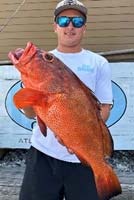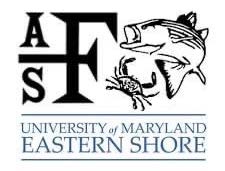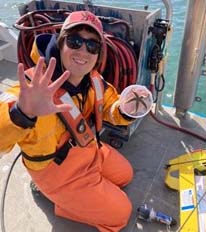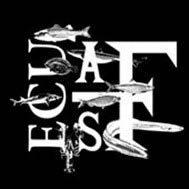Author: Sally Roman
Recreational Fishing News
In August, Susanna Musick of the Marine Advisory Program (MAP) at the Virginia Institute of Marine Science (VIMS), served on the organizing committee and co-hosted the inaugural World Volunteer FishTag Summit with partners from InfoFish (Australia), S.C. Department of Natural Resources, and the American Littoral Society. The two-day symposium featured presentations from more than 20 tagging programs from around the globe, representing more than 70 years of research and 5,000,000 fishes.
Commercial Fishing News
Spring and summer are busy times for field work. Several research groups at VIMS conducted fishery-independent surveys in state and federal waters along the U.S. East Coast. VIMS staff and graduate students participate in these efforts, that not only collect data to support management and assessment for a wide range of species but also for graduate student research and other research organizations.
The MAP sea scallop group worked with commercial fishers to survey the sea scallop resource from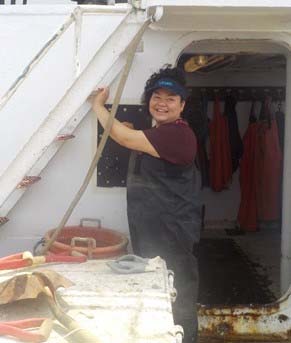
The Multispecies Research Group (MRG), under the advisement of Professor and Principal Investigator Dr. Robert Latour already had conducted a combined 570 days on the water in 2023 (as of the beginning of September). In late spring, the MRG completed both portions of the monitoring and tagging studies for the evaluation of striped bass in Virginia. Data shows average spawning stock in the James and Rappahannock rivers. The Cooperative Atlantic States Shark Pupping and Nursery (COASTSPAN) survey also completed its three, annual 35-site cruises from June to August in the lower Chesapeake Bay and the Virginia Eastern Shore. While the COASTSPAN survey focuses on neonate and juvenile sharks, the Virginia Shark Monitoring and Assessment Program (VASMAP) focuses on adult sharks in near coastal Virginia waters. This shark longline survey is one of the longest running in the world, coming up on its 50th anniversary in 2024. Three out of the four total cruises have been completed so far in 2023 (as of the beginning of September). Two of the largest surveys operated by the MRG are also nearing completion for the 2023 field season. The Chesapeake Bay Multispecies Monitoring and Assessment Program recently finished its fourth cruise of the year completing all 80 of its randomly selected depth stratified stations. The Northeast Area Monitoring and Assessment Program (NEAMAP) completed all of its 150 stations in the spring survey of the near-shore Mid-Atlantic and Southern New England. Then in late September, sampling occurred in Southern New England waters.
The American Eel Monitoring Program, also conducted by VIMS staff under advisement of Dr. Mary Fabrizio and Dr. Troy Tuckey, focuses on recruitment of glass eels, and had mixed results this spring. There were average counts at one site (York River), below-average counts at another site (James River) and above-average counts at two others (Rappahannock and Potomac rivers). Drs. Fabrizio and Tuckey also oversee the Juvenile Fish Trawl Survey, which operates in the Chesapeake Bay. The survey saw a lot of juvenile spot this spring, which is a change in the positive direction, as catches had been relatively low for the past few years. However, there continues to be a decline in juvenile weakfish in the bay. They are starting a new NOAA –funded project called, “Forecasting the effects of climate change on Chesapeake Bay fisheries using physiologically informed habitat models” and will be working with Marjorie Friedrichs, Pierre St-Laurent, Aaron Bever, and Vaskar Nepal. This project will examine habitat suitability from a physiological perspective focusing on striped bass, Atlantic menhaden, spot, bay anchovy, and white shrimp in Chesapeake Bay. They will couple species-specific,
physiology-based habitat models with the Chesapeake Bay Environmental Forecast System to quantify habitat in Chesapeake Bay today and project species-specific habitat conditions expected in 2050 under different climate change scenarios.
